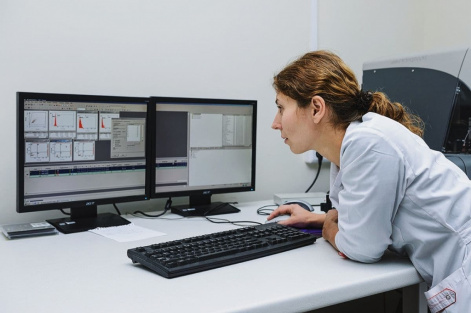International Day of Women and Girls in Science
11 February 2021 г. FRC KSC SB RAS

According to UNESCO data for 2014-2016, only 30% of girls choose scientific and technical disciplines when entering universities. Globally, the proportion of female students attending universities is negligible in ICT (3%), science, mathematics and statistics (5%), as well as in engineering, industry and construction (8%). The main obstacles for girls in science are noted to be stereotypes and prejudices. So, according to the Geena Davis Institute, only 12% of female characters in films and on television work in the field of science and technology.
In order to achieve equal access for women and girls to science, the UN General Assembly adopted resolution 70/212, proclaiming February 11 as the International Day of Women and Girls in Science. The date of the holiday was chosen in honor of the birthday of the mathematician Ada Lovelace, who had written the first known algorithm for a mechanical computing machine and predicted that such devices would someday be able to perform a variety of tasks. Lovelace is considered to be the first programmer in history of humanity!
In Russia, according to UNESCO, among researchers in technical sciences, only 35% are women, in natural sciences - 42%, in agriculture - 56%, in medical sciences - 60%. In the humanities, the proportion of women is close to two-thirds. But the difference is not due to biological differences. Women, due to social stereotypes, consider themselves not to be inclined to natural and technical sciences.
The theme for this year's celebration is "Women Scientists at the Frontline of the Fight Against COVID-19." Finding treatments to prevent and mitigate the negative impact of COVID-19 is now a top priority for the global scientific community. Scientists of the Federal Research Center "KSC SB RAS" also take an active part in solving this problem.
A scientific team led by Anna Kichkailo, head of the laboratory of digital controlled drugs and theranostics of the Federal Research Center "KSC SB RAS" and head of the laboratory of Biomolecular and Medical Technologies at the V.F. Voino-Yasenetsky Krasnoyarsk State Medical University, is engaged in molecular computer modeling of aptamers. Aptamers are single-stranded DNA molecules which specifically bind to different targets. Since 2016, the team has been investigating the structure of molecules, studying the mechanisms of interaction of aptamers with protein targets.
“In early 2020, the COVID-2019 pandemic set new goals and targets for us. The new project was based on the idea of creating an aptamer which could block the SARS-CoV-2 spike protein and prevent the virus from entering the cell. This project, called The Good Hope Net, has brought together more than forty scientists from eight countries of the world, ” says Polina Artyushenko, Candidate of Physical and Mathematical Sciences, Junior Researcher at the Laboratory of Digital Controlled Drugs and Theranostics of the Federal Research Center of KSC SB RAS.
By analyzing the mechanism of interaction of this aptamer with the protein using quantum-chemical calculations and consistently introducing structural modifications that improve binding, 4 aptamers were obtained, which formed stable complexes with the target. The simulation results were verified by various experimental methods (flow cytometry, fluorescence polarization and small-angle scattering), confirming the interaction of the aptamers with the RBD protein.
“During the project, we modeled a starting aptamer library of 256 structures. Using the molecular docking approach, an aptamer with the best interaction with the receptor binding domain of the spike protein (RBD receptor binding domain) was selected from this library, ” comments Irina Shchugoreva, Junior Researcher of the Laboratory of Digital Controlled Drugs and Theranostics at the Federal Research Center of KSC SB RAS.
The team leader Anna Kichkailo shares the results of the research: “Our team has achieved significant success this year. The project is unique not only in that such modeling was carried out for the first time in the world, but also in that, without being able to conduct experimental studies with biological material at the initial stage, the creation of aptamers for RBD was carried out in silico using computer modeling methods.
The developed approach for the in silico selection of aptamers is universal and can be used to create and modify aptamers for different targets, thus finding a wide application in medicine.
Share:
